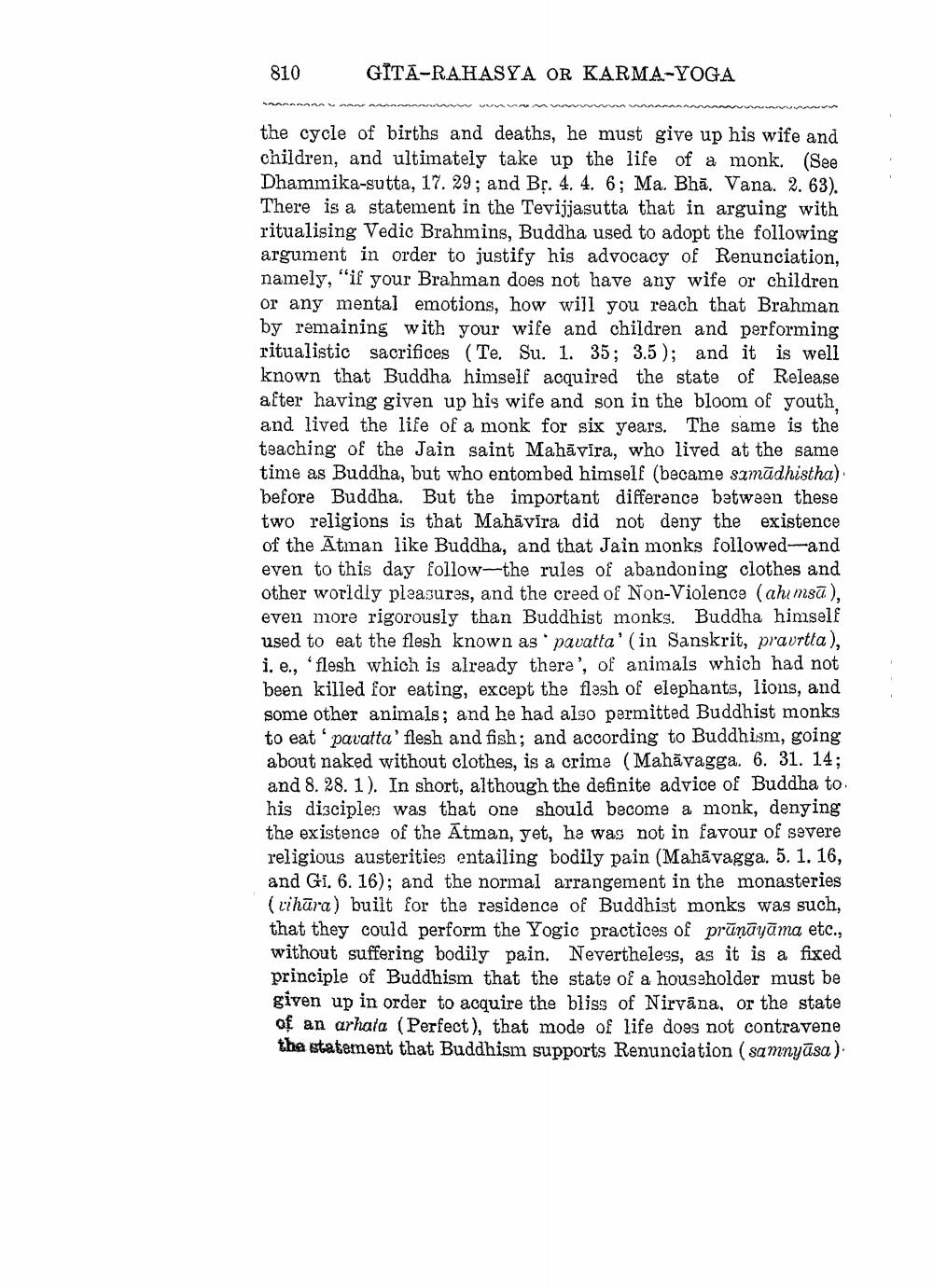________________
810
GITA-RAHASYA OR KARMA-YOGA
Innnnnnnn
the cycle of births and deaths, he must give up his wife and children, and ultimately take up the life of a monk. (See Dhammika-sutta, 17. 29; and Br. 4. 4. 6; Ma. Bhā. Vana. 2. 63). There is a statement in the Tevijjasutta that in arguing with ritualising Vedic Brahmins, Buddha used to adopt the following argument in order to justify his advocacy of Renunciation, namely, "if your Brahman does not have any wife or children or any mental emotions, how will you reach that Brahman by remaining with your wife and children and performing ritualistic sacrifices (Te. Su. 1. 35; 3.5); and it is well known that Buddha himself acquired the state of Release after having given up his wife and son in the bloom of youth, and lived the life of a monk for six years. The same is the teaching of the Jain saint Mahāvīra, who lived at the same time as Buddha, but who entombed himself (became samādhistha) before Buddha. But the important difference between these two religions is that Mahāvīra did not deny the existence of the Ātman like Buddha, and that Jain monks followed--and even to this day follow-the rules of abandoning clothes and other worldly pleasures, and the creed of Non-Violence (ahımsū), even more rigorously than Buddhist monks. Buddha himself used to eat the flesh known aspavatta' (in Sanskrit, pravrtta), i. e., 'flesh which is already there', of animals which had not been killed for eating, except the flesh of elephants, lions, and some other animals; and he had also permitted Buddhist monks to eat' pavatta' flesh and fish; and according to Buddhism, going about naked without clothes, is a crime (Mahāvagga. 6. 31. 14; and 8. 28.1). In short, although the definite advice of Buddha to. his disciples was that one should become a monk, denying the existence of the Atman, yet, he was not in favour of severe religious austerities entailing bodily pain (Mahāvagga. 5. 1. 16, and Gi. 6. 16); and the normal arrangement in the monasteries (vihūra) built for the residence of Buddhist monks was such, that they could perform the Yogic practices of prūņāyāma etc., without suffering bodily pain. Nevertheless, as it is a fixed principle of Buddhism that the state of a householder must be given up in order to acquire the bliss of Nirvāna, or the state of an arhata (Perfect), that mode of life does not contravene the statement that Buddhism supports Renunciation ( samnyāsa)




